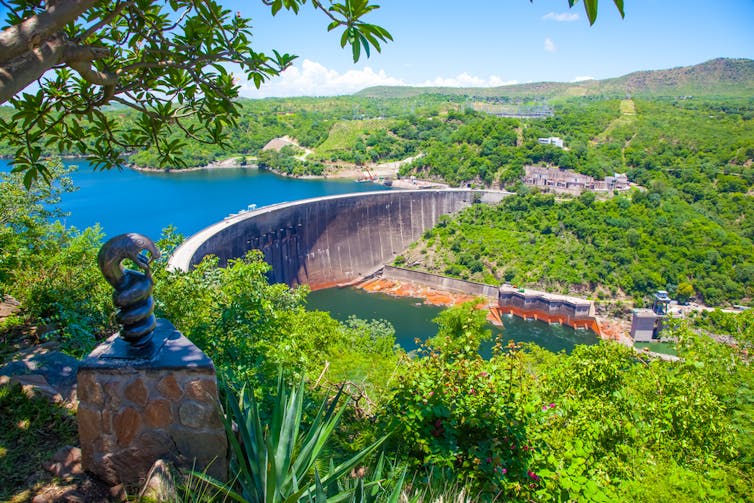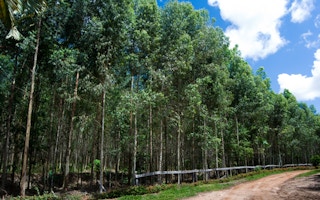In the forests of northern Sweden, a major train line cuts through land originally protected for migratory birds—so new seasonal wetlands have been established for the birds nearby. In southern Uganda, a huge hydropower dam has flooded swathes of tropical forest—so degraded forests nearby have been restored and the lands they sit on protected.
On the remote, wild shores of the Caspian Sea, a strategic port runs the risk of disturbing threatened seals—so entire islands have been created to ensure the mammals have sufficient habitat.
All of these projects are examples of what’s referred to by planners and developers as biodiversity offsets. But does any of this really make a difference and genuinely prevent new infrastructure from harming biodiversity overall?
The idea is simple: to generate biodiversity gains that fully compensate for damage caused by a new development. In theory, it is a last resort, used only after all attempts have been made to avoid, reduce or remedy any loss of wildlife or their habitats.
The goal is to ensure that biodiversity is left no worse off overall than before the development (a so-called “no net loss” policy). In practice, offsets often come in the form of restoring or protecting habitat elsewhere (assuming it would be lost without protection) similar to the one that has been destroyed by the development.
Why you should care
It’s much more than a boring technicality in the planning process: biodiversity offsetting is actually a highly controversial and globally-significant biodiversity conservation practice.
In 2018, one of us (Joseph) led the first ever global assessment of biodiversity offsetting in terms of implementation, and the results were astonishing: research found that the total area managed for conservation under biodiversity offsets was roughly 150,000 square kilometres (with large uncertainty around this number because data is difficult to come by)—an area the size of Bangladesh. It also found that most offsets are established because of legal requirements in national regulation, and that most offsets are offsetting impacts within forest ecoregions—more on the significance of that later.

Forests will be lost to dams like these. Can they really be offset? Lynn Yeh / shutterstock
Even more importantly, however, it appears as if the use of offsets is likely to keep on growing, as the underlying driver of why we supposedly need them—the rapid expansion of human impacts on natural ecosystems—continues to increase. At the latest count, 108 countries now have or are developing policies that make provisions for offsetting.
Whether biodiversity offsets work
So, given that offsetting is emerging as a key tool for mitigating the impacts of increasing human pressures on ecosystems, what is the evidence that they actually work?
To address this question, we recently reviewed with colleagues the actual real-world outcomes of offsetting and no net loss policies around the world. We looked at academic studies from ecosystems spanning streams and wetlands in North America, to European tidal mudflats and ponds, to Australian forests. Our results, published in the journal Conservation Letters, were surprising.
We found that around a third of the biodiversity offsets we studied did indeed achieve no net loss. However, these successes occurred in wetland ecosystems like ponds, marshes or streams: we found no evidence that offsets applied in forest systems have successfully achieved no net loss.
“
At the latest count, 108 countries now have or are developing policies that make provisions for offsetting.
Recall earlier that two-thirds of all offsets globally were found to be in forest ecosystems. Our study demonstrates that without serious changes in the way offsets are conducted and monitored in these ecologically rich and complex habitats, there is insufficient proof that offsets are enough to achieve no net loss of biodiversity from land clearing.
We also found no evidence that offsets which protect ecosystems that might otherwise have been cleared (so called “avoided loss” offsets) have achieved no net loss. This is likely because the biodiversity “gains” from protection were often overestimated—for example, perhaps the offsets were located in an area that was not really under threat, and so protecting it did not significantly reduce the probability of habitat loss.
Another important finding was that the way that most studies have measured the outcomes of no net loss policies is by assessing changes in the area of habitats under the jurisdiction of these policies.
From an ecological perspective, this is a somewhat rudimentary way of assessing changes in biodiversity, as it does not distinguish between high-quality, biodiverse habitats and biodiversity-poor habitats. Therefore, information on the “true” biodiversity outcomes of no net loss policies is still in short supply.
The future of no net loss
Returning to our railway in Sweden, our dam in Uganda and our port in Kazakhstan, two things are immediately clear. First, without naming names, the ecological effectiveness of no net loss policies can be highly variable. Second, many developments are crucial to people and their well-being, but come at a cost to nature that must be managed somehow given ongoing global biodiversity declines.
In the face of the rapid global increase in human impacts on natural systems, it is essential that we find a way to mitigate the biodiversity losses. With constant adaptive improvements in line with the best science, biodiversity offsets may have an important role to play—but we need to accept that there are significant limits to what offsetting can achieve.
Sophus zu Ermgassen is a PhD researcher and Joseph William Bull is a lecturer at the University of Kent. This article was originally published on The Conversation.












